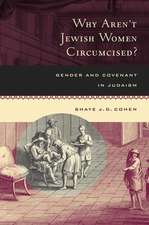Childbirth and the Display of Authority in Early Modern France: Women and Gender in the Early Modern World
Autor Lianne McTavishen Limba Engleză Hardback – 29 mar 2005
Din seria Women and Gender in the Early Modern World
-
 Preț: 225.10 lei
Preț: 225.10 lei - 19%
 Preț: 364.64 lei
Preț: 364.64 lei - 9%
 Preț: 1003.31 lei
Preț: 1003.31 lei -
 Preț: 289.10 lei
Preț: 289.10 lei - 8%
 Preț: 397.61 lei
Preț: 397.61 lei - 18%
 Preț: 1054.71 lei
Preț: 1054.71 lei - 18%
 Preț: 1004.68 lei
Preț: 1004.68 lei - 18%
 Preț: 1054.71 lei
Preț: 1054.71 lei - 18%
 Preț: 1055.06 lei
Preț: 1055.06 lei - 26%
 Preț: 764.20 lei
Preț: 764.20 lei - 26%
 Preț: 764.20 lei
Preț: 764.20 lei - 18%
 Preț: 1001.84 lei
Preț: 1001.84 lei - 18%
 Preț: 1000.27 lei
Preț: 1000.27 lei - 25%
 Preț: 497.08 lei
Preț: 497.08 lei - 18%
 Preț: 1000.27 lei
Preț: 1000.27 lei -
 Preț: 369.73 lei
Preț: 369.73 lei - 18%
 Preț: 1056.63 lei
Preț: 1056.63 lei - 28%
 Preț: 826.01 lei
Preț: 826.01 lei - 18%
 Preț: 1053.92 lei
Preț: 1053.92 lei - 25%
 Preț: 768.30 lei
Preț: 768.30 lei - 28%
 Preț: 819.48 lei
Preț: 819.48 lei - 18%
 Preț: 1113.63 lei
Preț: 1113.63 lei - 25%
 Preț: 767.07 lei
Preț: 767.07 lei - 31%
 Preț: 766.99 lei
Preț: 766.99 lei - 18%
 Preț: 1058.69 lei
Preț: 1058.69 lei -
 Preț: 369.73 lei
Preț: 369.73 lei - 18%
 Preț: 1061.81 lei
Preț: 1061.81 lei - 31%
 Preț: 766.85 lei
Preț: 766.85 lei - 18%
 Preț: 1060.25 lei
Preț: 1060.25 lei - 28%
 Preț: 735.34 lei
Preț: 735.34 lei - 18%
 Preț: 1000.27 lei
Preț: 1000.27 lei - 18%
 Preț: 1061.81 lei
Preț: 1061.81 lei - 18%
 Preț: 1061.06 lei
Preț: 1061.06 lei - 28%
 Preț: 876.07 lei
Preț: 876.07 lei - 18%
 Preț: 1064.70 lei
Preț: 1064.70 lei - 18%
 Preț: 1107.61 lei
Preț: 1107.61 lei - 26%
 Preț: 736.38 lei
Preț: 736.38 lei - 18%
 Preț: 1068.15 lei
Preț: 1068.15 lei - 18%
 Preț: 1061.06 lei
Preț: 1061.06 lei - 18%
 Preț: 1000.76 lei
Preț: 1000.76 lei - 26%
 Preț: 819.84 lei
Preț: 819.84 lei - 18%
 Preț: 1109.18 lei
Preț: 1109.18 lei - 28%
 Preț: 821.53 lei
Preț: 821.53 lei - 18%
 Preț: 1000.27 lei
Preț: 1000.27 lei - 28%
 Preț: 827.75 lei
Preț: 827.75 lei - 18%
 Preț: 1122.62 lei
Preț: 1122.62 lei
Preț: 234.90 lei
Preț vechi: 281.27 lei
-16% Nou
Puncte Express: 352
Preț estimativ în valută:
44.95€ • 46.93$ • 37.20£
44.95€ • 46.93$ • 37.20£
Carte tipărită la comandă
Livrare economică 04-18 aprilie
Preluare comenzi: 021 569.72.76
Specificații
ISBN-13: 9780754636199
ISBN-10: 0754636194
Pagini: 272
Dimensiuni: 153 x 219 mm
Greutate: 0.45 kg
Ediția:New.
Editura: Taylor & Francis
Colecția Routledge
Seria Women and Gender in the Early Modern World
Locul publicării:Oxford, United Kingdom
ISBN-10: 0754636194
Pagini: 272
Dimensiuni: 153 x 219 mm
Greutate: 0.45 kg
Ediția:New.
Editura: Taylor & Francis
Colecția Routledge
Seria Women and Gender in the Early Modern World
Locul publicării:Oxford, United Kingdom
Cuprins
Contents: Introduction: interpreting obstetrical treatises; French treatises 1550-1730: a survey; Risking exposure: the visual politics of childbirth; Reading the midwife's body: Louise Bourgeois; Looking the part: men-midwives on display; Bodies in labour: rhetoric, rivalry, and male maternity; Handling the unborn: men-midwives between vision and blindness; Conclusions; Selected bibliography; Index.
Recenzii
'This illuminating and original study of early modern French obstetrical treatises extends the current revisionary analysis of the history of midwifery into the realm of the visual. McTavish’s historical and theoretical exploration of images and the visual politics of childbirth supplies a crucial new facet to our understanding of the historical sources, to the constructions of gender and medical knowledge in the period, to the early modern body, and to the complex and shifting representation of the professions associated with childbirth.' Elizabeth D. Harvey, University of Toronto, Canada 'Lianne McTavish's vibrant inter-disciplinary study draws on obstetrical treatises and images to redefine and refine the emergence of the man-midwife in early modern Europe. This rich and ground-breaking study will inform and fascinate historians of midwifery and medicine, as it expertly maps out changes in midwifery practice and the representation of knowledge, leading to the emergence of a new medical authority.' Hilary Marland, Reader in History and Director of the Centre for the History of Medicine, University of Warwick '... extremely interesting... Focusing on the visual, and more specifically on the iconography in birthing texts instead of these manuals' written contents, this book is unique in its approach...' American Historical Review 'Lianne McTavish has written a fascinating account of the visual culture of childbirth in early modern France... in a refreshing style light on jargon, she explicates what looking and being looked at meant in birthing rooms. McTavish's work makes several important contributions to the growing literature on early modern childbirth and midwifery... Historians of early modern medicine, of childbirth and of the body will all enjoy this book.' Social History of Medicine '... a highly readable book, one that offers many fresh insights and which raises intelligent questions.' Renaissance Quarterly '... Lianne McTavish's careful and thoug
Notă biografică
Lianne McTavish is a Professor in the Department of Art and Design, University of Alberta, Canada. She has published work on early modern French visual culture, the history of childbirth, and critical museum theory.
Descriere
How could men appear to be trustworthy birth assistants at a time when women were associated with a bodily comprehension of childbirth? To answer this question, Lianne McTavish examines a range of sources, focusing on obstetrical treatises and pamphlets published in early modern France, looking in particular at the visual culture of childbirth.













